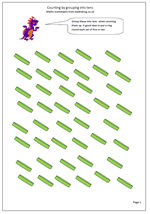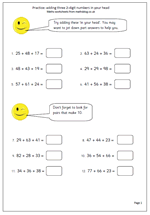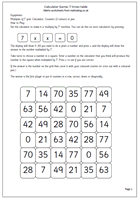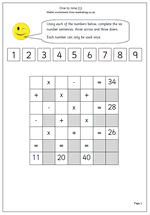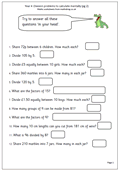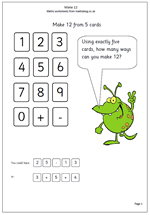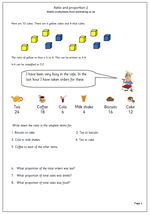Here we have another page on multiplying decimal fractions by 10 or 100. The method used today is to move each number one place to the left when multiplying by ten and two places to the left when multiplying by 100. The decimal point does not move. I seem to remember moving decimal points around when I was at school but this is certainly not recommended here.
When doing this with money it is worth remembering that two digits should always be written after the decimal point, so that £2.56 x 10 is not £25.6, but £25.60. (This is not an excuse for saying ‘add a nought’.)

